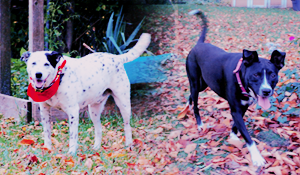Interesting responses.
First, I'd like to say that there is some thinking among professional trainers (of which I am one) that pushing on the butt to teach sit is causing hip problems, especially with big dogs. I and many professionals no longer recommend that old method.
The method I use is very similar to the one many of you have suggested. Take a treat. Hold it in your hand with the tip of your forefinger and thumb. With your palm up, put the treat RIGHT IN THE DOG'S NOSE. I mean, get that treat in the dog's nose, but don't let him have it. Let him get a whiff of what you've got. Then, slowly raise your hand up over the head and back. As the dog leans back to see the treat, the butt will fall. Don't push the butt down. You may, if necessary, very lightly place your hand on the back end, but do not push. The instant the dog sits, give a treat. Use a release word (OK) to release the dog from the sit. Praise verbally. You can pet as well. Repeat.
You actually don't add the command "sit" until the dog is luring into the sit position easily. Then, you will say "sit" before you begin the lure. Otherwise, the word "sit" won't develop power. If the dog can't even sit, how will it know what sit means?
Also, the biggest error people make with this method is incorrect placement of the lure. If your dog is jumping up to get the treat, you are holding the treat too high over the dog's head. Remember, it's up slightly and back - all done slowly. People also have a tendancy to move the lure way, way to fast. This is done slowly.
Over time, remove the treat from your luring hand. Keep the treat in your other hand, but continue to "pretend" there's a treat in your luring hand. Upon the sit, immediately bring in the treat with the other hand. Over time, lift your luring hand higher and higher in the air. This motion (moving your palm to the ceiling) will become your sit signal. Cool, huh!
If this method isn't working for you, you simply are doing it incorrectly. It does help to have someone watch you do it. In addition, seeing someone do it in person is priceless. Hence the importance of working in obedience classes with a real trainer.
As far as "fading" (getting rid of treats after a behavior has been learned) goes, I just posted a rather lengthy explanation on how to do that in Dog Behavior. I, unfortunately, cannot remember the name of the thread.
However, one poster said to treat for the first time your dog sits and not for the next, etc. This isn't the best approach when teaching a new behavior. When teaching a new behavior, you always treat for each successful competion of the behavior. You fade the treat away AFTER the dog has a full understanding of the command and the dog can perform it in any environment.
Also, when teaching a new behavior, I use the best treats I can get my grubby hands on. I'm not talking expensive, but the things my dog loves the best. This is usually human food. I only use human food as rewards in training, and also only for new behaviors or behaviors I'm having trouble with. Once the dog gets the behavior down, I will switch to a middle range treat (usually something store bought - my dogs like Bil Jac's Gooberlishish treats). Finally, you can switch to biscuits, and begin fading the food away (again see my post in Behavior).
Another aspect to teaching a strong behavior is "proofing." While your dog may sit fantastically in your house with few distractions, they may act like they've never heard the word when they get into a highly distractive environment. So, you must build up distractions as your dog becomes better at a behavior. I train at parks, strip-malls, Petsmarts, on walks, at people's homes - just anywhere I can find with an unusal environment that might distract the dog. Just remember. Increase the distractions slowly.
Also, an interesting point to know, dogs seem to "forget" behaviors at times. They will know sit like the back of their paw, and then one day, poof, it's gone. You'll ask for a sit, and they'll look at you like they never heard the word before. Seriously. Trainers believe they have kindof forgotten! This is EXTREMELY common. Don't get frustrated. Just go back to basics and retrain it. It will only take them a few minutes to "remember." Problems develop if the handler gets frustrated and begins getting angry at the dog. Then, "sit" becomes a bad thing, not a good thing. Always make training fun. Never get frustrated. This should be a game for the dog - not work. My dogs LOVE to train because I make it the most fun thing they do all day. It's play, play, play.
Have fun training!
MACH Aslan RE, MX, MXJ, EAC, EJC, OCC, Wv-N, TN-N, TG-N, R-SN, J-SN, R2-CL, CGC, TDI, FFX-AG (five year old sheltie)
Jericho OA, NAJ, R1-MCL, CGC, FFX-AP (three year old sheltie)
Laika NAJ, CGC (nine year old retired American Eskimo)
I've been defrosted.






 Reply With Quote
Reply With Quote



 Merry Holidays to One an All Blessed be
Merry Holidays to One an All Blessed be 




Bookmarks